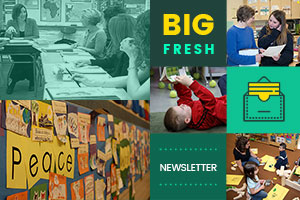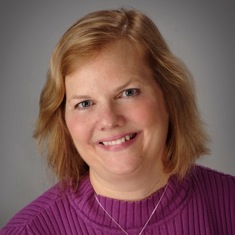The ultimate goal of farming is not the growing of crops, but the cultivation and perfection of human beings.
Masanobu Fukuoka
One of summer’s unique pleasures is reading the newsletter that comes each week in my box of organic vegetables. Our family gets a weekly share from Ripley Farms, a small family farm in rural Maine. Mary Margaret and her husband are the farmers, and her single-spaced one-page newsletter includes three things—an update on the farm, information about new vegetables in the box, and a simple recipe.
So why do I look forward to it so much? Why have I pulled it out and started reading it before I even look at what’s in the box? It’s because of what’s in the text beyond a simple list of vegetables.
The most important purpose of newsletters is to provide information (hence the news in the title). But the best ones do more than that. They give readers a sense of place and convey the writer’s passion. We sit in the same seat as the newsletter author. Look at Mary Margaret’s lead from an early August issue:
Sweltering in the hottest room in the house writing the newsletter, my brain is a little sluggish from the heat. I’m attempting relief with a chilled glass of Cucumber-Infused Water. It’s actually working and rather refreshing! (See that recipe under cukes.) That and I’ve trained one of the farm’s box fans on me. Mmmm August.
Mary Margaret is always taking me to a real place with her words—a field, a table where the farm’s helpers are sharing lunch, even the sweltering parlor in the farmhouse. That sense of place truly helps me know where my food comes from, and how much care goes into producing it.
The newsletters I received as a parent or faculty member often had a lot of students must or parents need to in them. Must, need to, or the dreaded it is imperative give readers a sense the writer is sitting on a throne in the clouds, shooting off thunderbolts of commands.
But when you give readers the honor of living in the same scene you’re living in, you’re inviting them again and again into your community. And they will want to be in that place with you if you clearly love it. Mary Margaret is joyful about vegetables. She shares genuine excitement when the tomato crop is stellar, as well as a sense of triumph when the deer are thwarted from pillaging this year’s crop of purple carrots.
So how can you have more of a sense of place in your newsletters to families, staff, or students? How do you show you love what you do? Start with prompts that help them see what you see:
I’m sitting here . . .
Looking out the window . . .
I’m standing with students in a circle . . .
And then find the pleasure in what you’re seeing.
I’m looking out at the buses lined up in front of the school, watching Alana hop, skip, and jump her way to one of them at the end of her first day in second grade.
Here we are Monday morning, sitting on the rug while the first flakes of snow fall . . .
They will still look for the “news” in your newsletter. But if you want to hold their attention, what matters more is your delight in what you do, rooted in the places where you find that joy.
This week we start a three-week series on improving read alouds for students of all ages. Plus more as always—enjoy!
Brenda Power
Founder, Choice Literacy

Andrea Smith uses the Color-Symbol-Image thinking routine during read alouds to promote deeper reflection among students.
Melanie Meehan looks at the issue of engagement through the lens of student questions during read alouds, and shares a strategy to provoke more thoughtful student participation.
Have you signed up yet for the Global Read Aloud? It’s a wonderful celebration of reading aloud with participants from around the globe. Sign-up is available through September, with read alouds taking place in October and early November.
Our newest online courses focus on classroom libraries and English language learners. Gradual Release of the Classroom Library with Bitsy Parks will help classroom teachers design minilessons and strategies for introducing students to the classroom library over time. English Language Learners and Literacy Instruction with Stella Villalba will give you tools and strategies for working with young learners from different cultures. If you’re a Choice Literacy member, you’ll receive 20-40% discounts off the course fees.
Our back-to-school DVD flash sale runs till September 9, with discounts of up to 70% on all titles. For this sale, you must purchase online and we can ship only to U.S. addresses. You can browse titles and sale prices at this link.

New members-only content is added each week to the Choice Literacy website. If you’re not yet a member, click here to explore membership options.
Tammy Mulligan enhances the quality of the class read aloud and student discussions with the use of a whole-class response notebook.
Christy Rush-Levine considers some of the “underground” ways she converses about books at conferences and on social media, and decides to set up a back channel for similar conversations in her classroom about read alouds.
Katherine Sokolowski introduces her students to routines and expectations early in the year with a unit on Jane Goodall, including many short read alouds.
This brief video is an excerpt from a read aloud in a first-grade classroom during morning snack break. You’ll notice Bitsy Parks uses a projector so students can eat at tables and desks, and makes quick connections to other books.
In an encore video, Linda Karamatic uses quick sketches to teach her second graders about sensory images during read aloud.

Lead Literacy now has a new home as the Leaders Lounge at Choice Literacy. We’ll be posting the new content updates here in the Leaders Lounge section of the Big Fresh newsletter.
If you want to get a quick snapshot of literacy instruction at your school, do an environmental walk. Matt Renwick shares his process and notes from one of these walks, as well as the issues they raise.
Jennifer Schwanke finds time in her busy schedule as a principal to read aloud three books in every classroom in her elementary school every year. She explains why it’s worth her time, and how she selects the books.
Angela Duckworth reflects on how “social blind spots” limit our ability to view our actions objectively, and how feedback is essential for building social intelligence.
Are your coaching cycles the best they can be? Sign up for our self-paced online course It’s a Cycle, Not a Hamster Wheel with Dana Murphy to improve everything from the way you advertise and launch your coaching cycles to assessing the work after it is completed. If you are a Literacy Leaders member, you receive a 40% discount off the course fee.
Quote It:
When you know what’s important, it’s a lot easier to ignore what’s not.
Marie Forleo
That’s all for this week!



